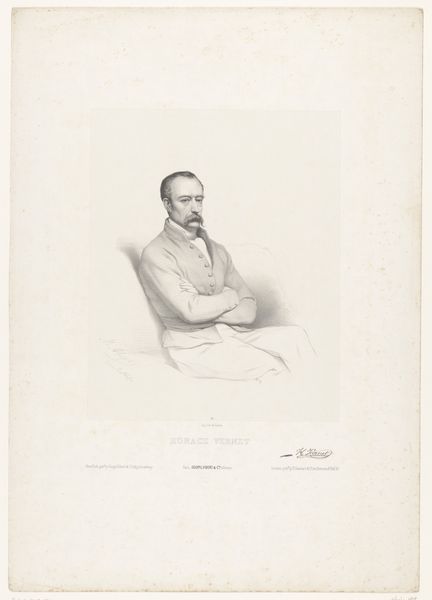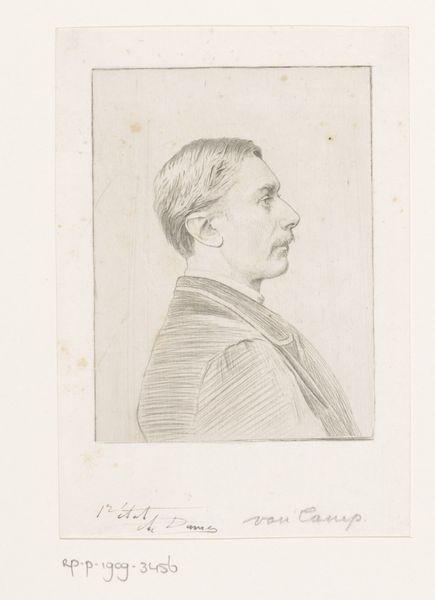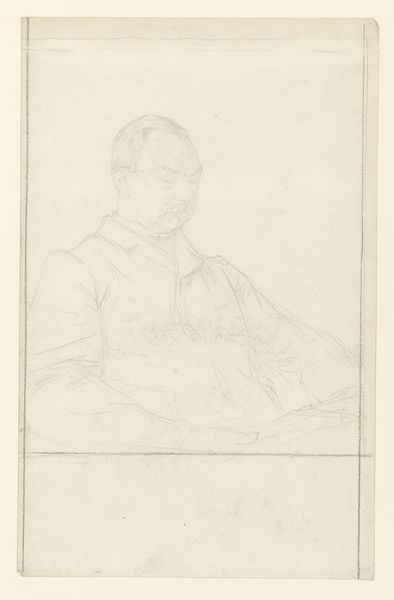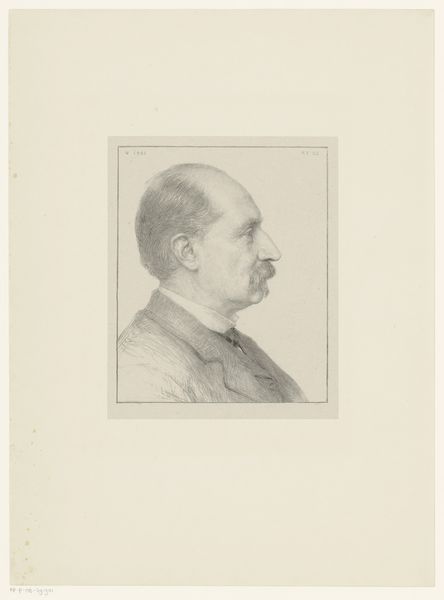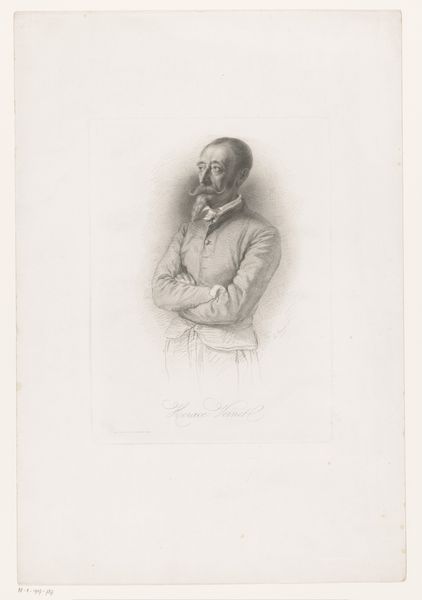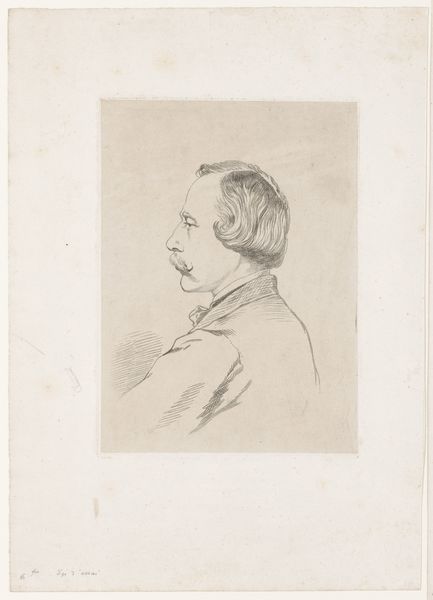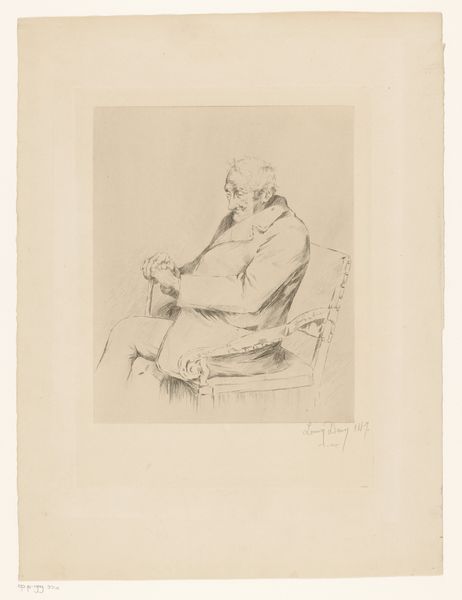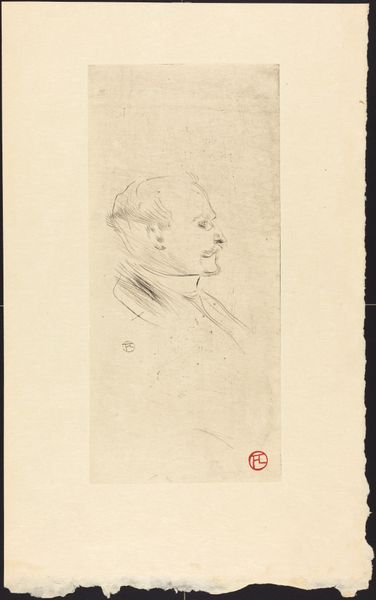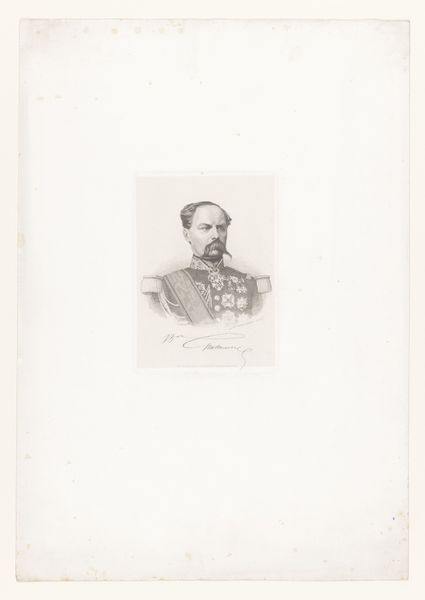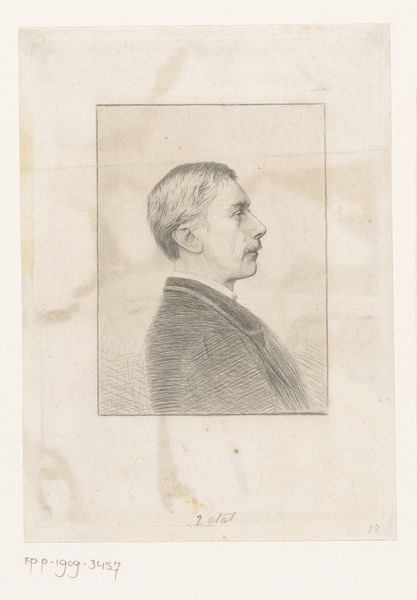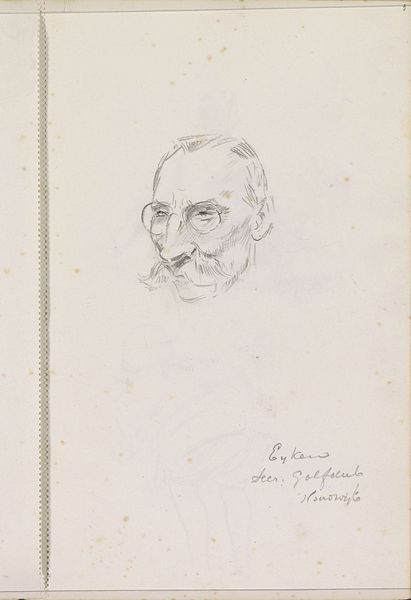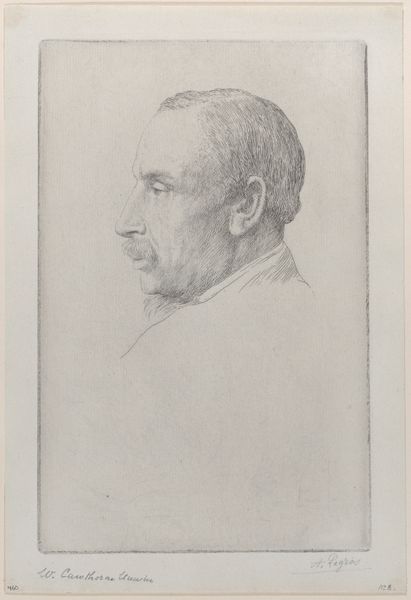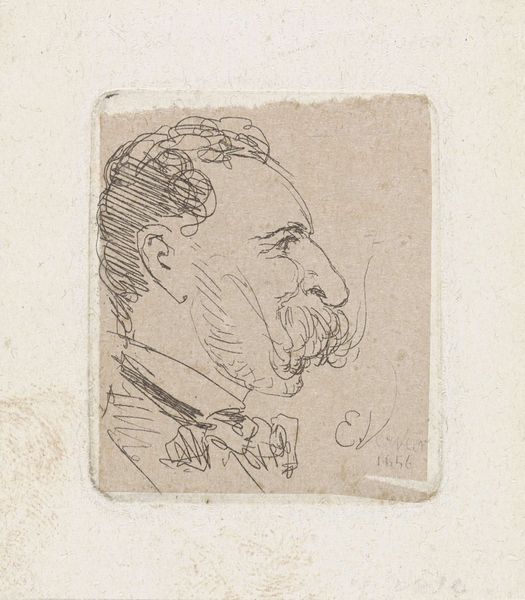
drawing, pencil
#
portrait
#
pencil drawn
#
drawing
#
light pencil work
#
ink paper printed
#
pencil sketch
#
pencil
#
pencil work
#
academic-art
#
realism
Dimensions: height 290 mm, width 222 mm
Copyright: Rijks Museum: Open Domain
Curator: Right, let’s dive into this intriguing pencil drawing currently housed here at the Rijksmuseum. It's titled "Portret van Louis Eugène Cavaignac" and its creation is situated sometime between 1843 and 1889, brought to us by Léopold Massard. What strikes you initially about this portrait? Editor: Immediately, it whispers of a certain… severity. It’s the tightly crossed arms, maybe, or the precise military attire. Like a photograph faded almost to transparency. It feels less like a living man and more like an idea of a man. Curator: That's a potent observation. Consider Cavaignac’s historical positioning: he was a French general who played a significant, though controversial, role during the Second Republic. His severe demeanor might reflect the burden of power and the social tensions he navigated during the 1848 revolution. Editor: Absolutely! And the medium--pencil on paper, feels fitting, like a sketch done in the heat of the moment. Quick, almost hesitant strokes. There's so much exposed paper around the figure— it amplifies the idea that this guy wasn't comfortable, surrounded by so much social tension. Curator: Interesting point about the empty space emphasizing discomfort. The Realism style places importance on accurate depiction, and the academic art tradition gives a formal presentation of an elite member of society. Think about how realism as a movement was developing—its ties to revolutionary ideas, and this image reflects these complex tensions. The choice to show him in military regalia further accentuates his political authority, his power derived from military strength. Editor: Yet there’s vulnerability here, paradoxically. Massard captures something hesitant, almost uncertain, in his eyes. It’s as if, behind the posed strength, there's a fragile, introspective person peeking through. Like Cavaignac the man and Cavaignac the icon in a battle royale. Curator: Yes, that's where the power of the portrait lies—the ability to hint at the psychological depth of a historical figure. We see the figure's internal struggle. Understanding how he has been represented and perceived within historical narratives helps contextualize these emotional nuances within France’s fraught sociopolitical climate. Editor: Makes you think about the stories we tell about our leaders, doesn’t it? Are we seeing them, or just the role they played? I think Massard challenges this here. Curator: It definitely leaves you considering the intricate intersection between personal identity and public persona. Editor: Right? Makes me wonder what he was really like after the battles were done and the sketchpad was put away.
Comments
No comments
Be the first to comment and join the conversation on the ultimate creative platform.
